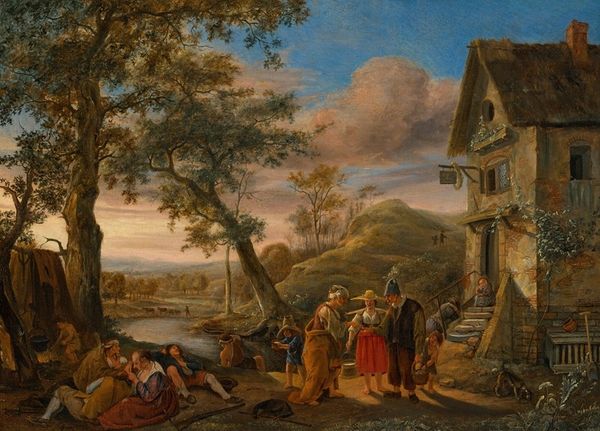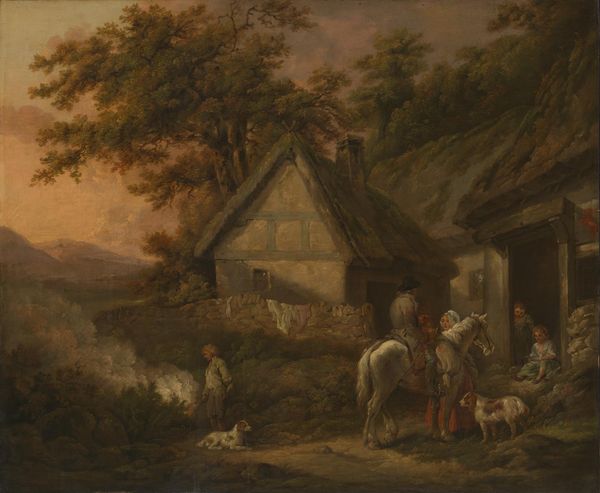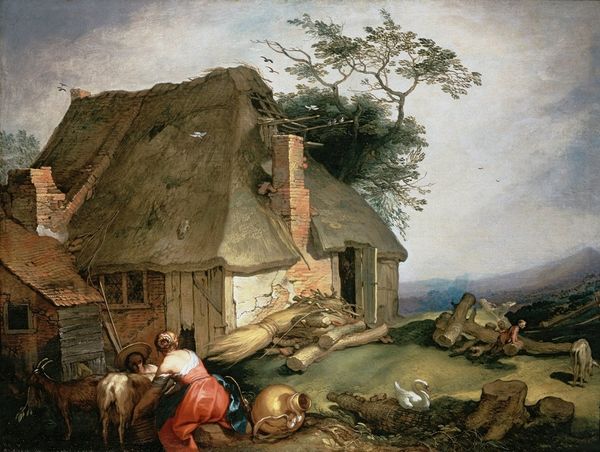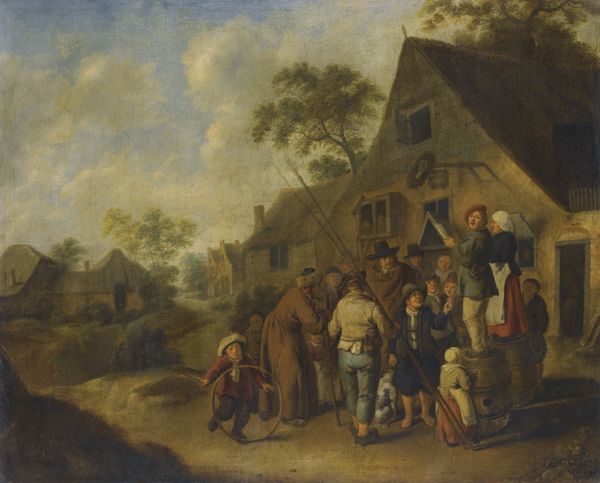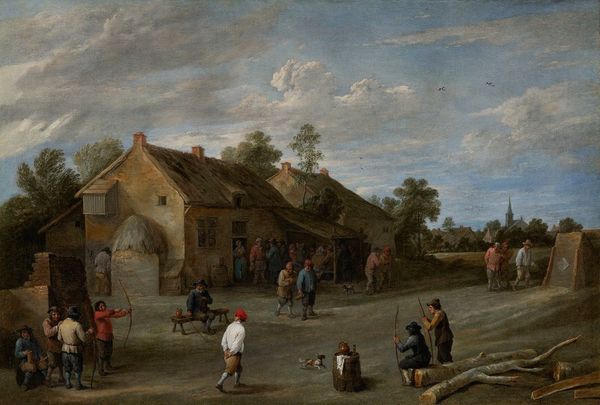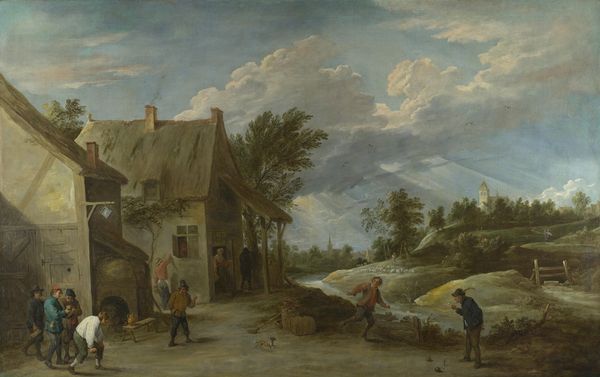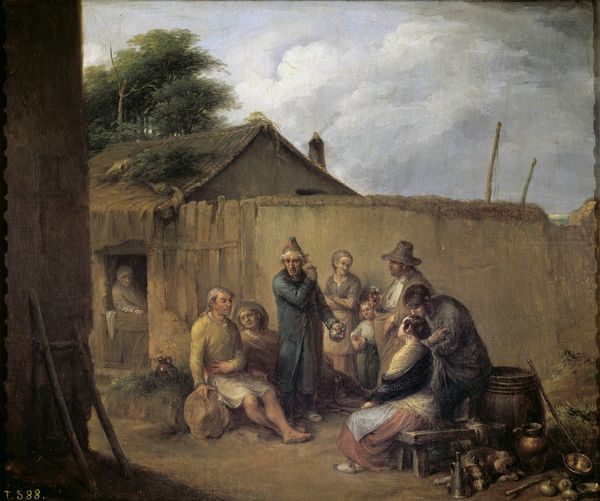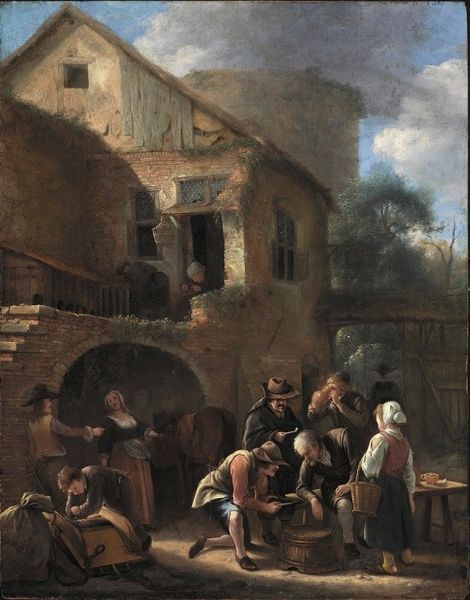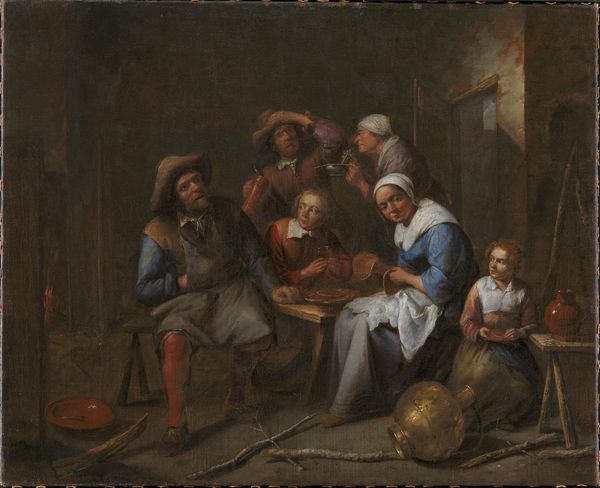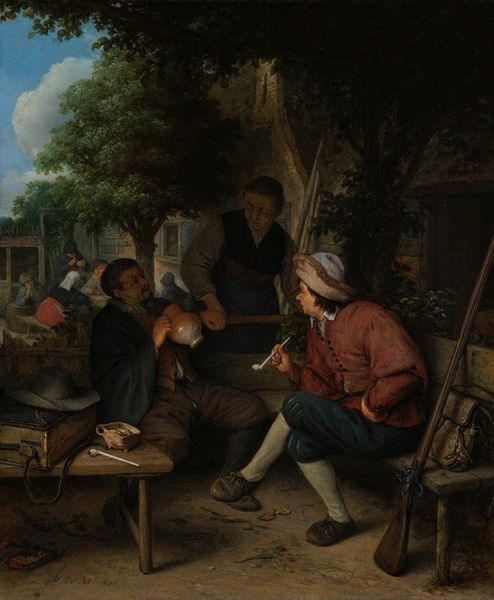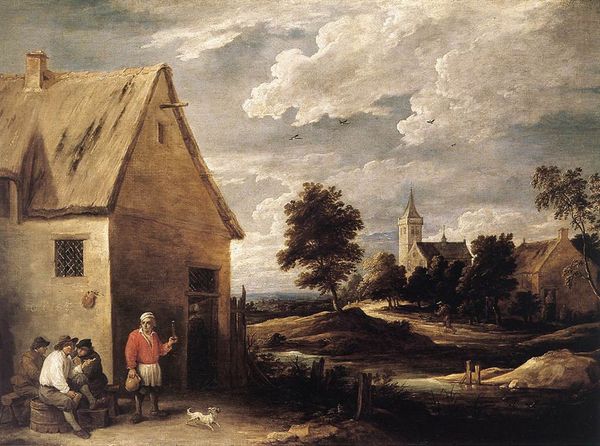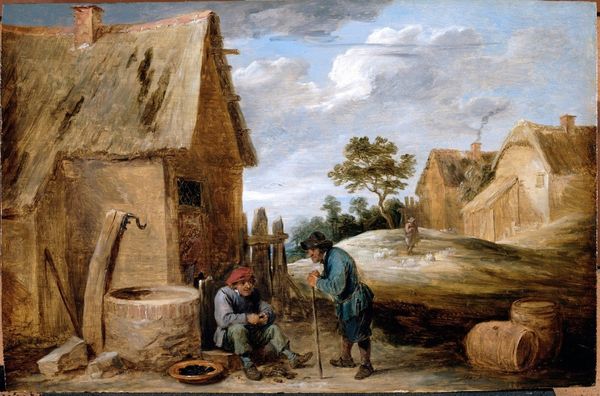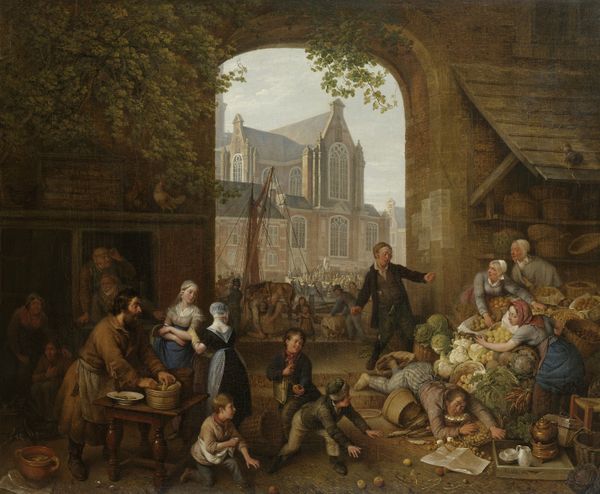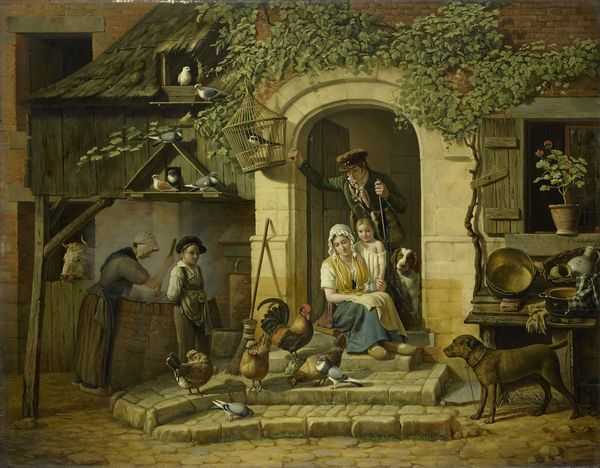
Husbandman at a Cottage Door with a Seated Woman and Child c. 1650 - 1655
0:00
0:00
painting, oil-paint
#
portrait
#
figurative
#
baroque
#
painting
#
oil-paint
#
landscape
#
figuration
#
oil painting
#
genre-painting
Copyright: Public Domain: Artvee
Curator: Looking at this canvas, I find myself immediately drawn to the interplay of light and shadow; the deep, earthy tones are punctuated by brighter areas that draw the eye around the composition. Editor: This painting, rendered in oil paint, is titled "Husbandman at a Cottage Door with a Seated Woman and Child". It was painted around 1650 to 1655 by David Teniers the Younger. It feels characteristic of its time, offering a slice-of-life scene steeped in socio-economic realities. Curator: Yes, there's a stillness, an almost photographic realism in the rendering of the figures, their garments, the textures of the cottage itself. Notice how the lines converge at the man’s pointing finger, creating a path into the background. Editor: Absolutely, that directional cue invites the viewer to speculate on the landscape he gestures toward; is it a symbol of aspiration, of a different life beyond the immediate setting? Such rural genre paintings gained prominence during that era, reflecting a growing interest in the lives of the common folk. It perhaps sentimentalized the difficult circumstances that were a reality for many. Curator: True. Yet, observing the chromatic restraint of the setting in juxtaposition with the brighter hues of the figures in the foreground, the effect enhances the composition's equilibrium, making the subjects immediate, tangible. Editor: Considering the societal context of its production and reception, what do you make of the idyllic nature ascribed to it? Does this representation of rustic life serve the purpose of distracting from greater social inequities, a projected image for the well-to-do? Curator: It would be imprudent to ignore such factors, of course, yet it is equally compelling to interpret it by looking at the structure of the forms, the delicate lines that constitute its very architecture; without such attention to craft, whatever intention dissolves to speculation. Editor: I agree. It strikes me, reflecting on our talk, that we have each, to some extent, navigated the pitfalls of our particular disciplines and converged towards understanding art as inextricably tethered to both aesthetics and society.
Comments
No comments
Be the first to comment and join the conversation on the ultimate creative platform.
